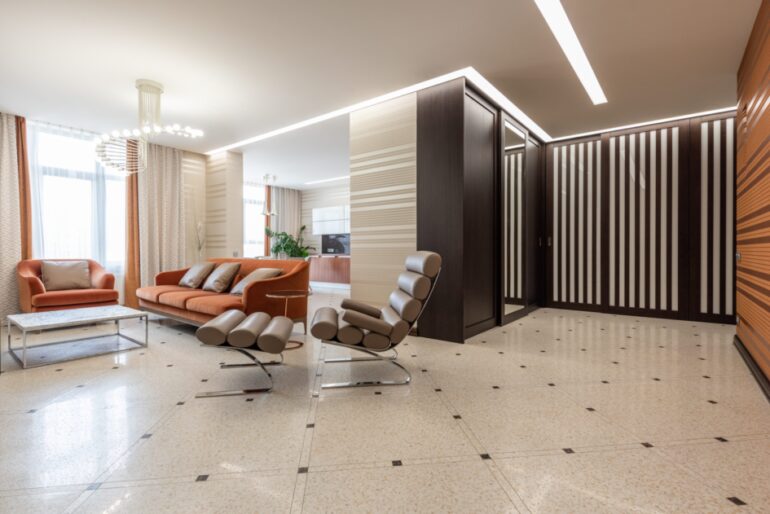‘Tis the season for allergies, lasting in some cases until mid-October, including everything from grass to ragweed pollen. With 25 per cent of the population reporting that they have allergies, keeping them at a minimum will improve your staff and visitor experience in your facility.
It is important for facility and maintenance managers to prioritize the air quality in the building to help keep people safe. Ventilation is one of the ways to improve air quality, but what about flooring? Dust mites and allergens can accumulate in carpet fibres and hardwood floors, so it’s important to have a strategy to address these issues to improve your facility’s air quality.
Hardwood floors
While these may be a better choice because they don’t collect as many particles, contaminants can still accumulate between the floor boards, so it’s important to stay vigilant. The floor might look clean and shiny but could still be harbouring allergens and mould that threaten your air quality. Keeping your hardwood floors clean and dry is the secret to them staying allergen- and mould-free.
Tile and stone floors
Though these floors can be easily maintained, the risk lies with keeping the grout lines clean and free of contaminants. Sticking to a consistent schedule will help you stay on top of the cleanliness of these floors, with a monthly deep clean, the appropriate products, and sealants that can help keep allergens from settling into the grout. Maintain these floors on a regular basis to ensure that they are not helping to lower the air quality in your building.
RELATED: Keeping your tile and grout clean
Laminate floors
Just like hardwood, these floors may present less of a risk, as they do not tend to trap as many particles as carpet flooring. However, the risk with laminate is that many of these floors can release volatile organic compounds (VOCs), which have been linked to potential health issues. Consider switching to a low-VOC type of flooring and adhesive to mitigate this risk and improve the condition of your building.
Carpet floors
This type of flooring is probably the most likely to affect the air quality in your building, as it can hold allergens, dust, and invisible contaminants that fall from the air and get trapped in the fibres. Some experts feel that carpet actually helps air quality because it traps those contaminants, removing them from the air. The caveat, though, is that the floors must be cleaned and vacuumed regularly to avoid buildup.
Detergent helps get those carpet fibres clean, followed by vacuuming for removing anything loose and a clean appearance. Be sure to open windows and add ventilation to help carpets dry as quickly as possible and lower the risk of mould developing as it dries. Maintaining a regular, thorough routine of cleaning your carpets will reduce the risk of it adversely affecting the air quality or the health of the people in your building.
While flooring is not always immediately tied to air quality, your flooring can have an effect on the allergens and mould amounts in your building. Clean your floors regularly with a focus on hygiene to keep your building safe, cut down on allergens, and improve your air quality.








